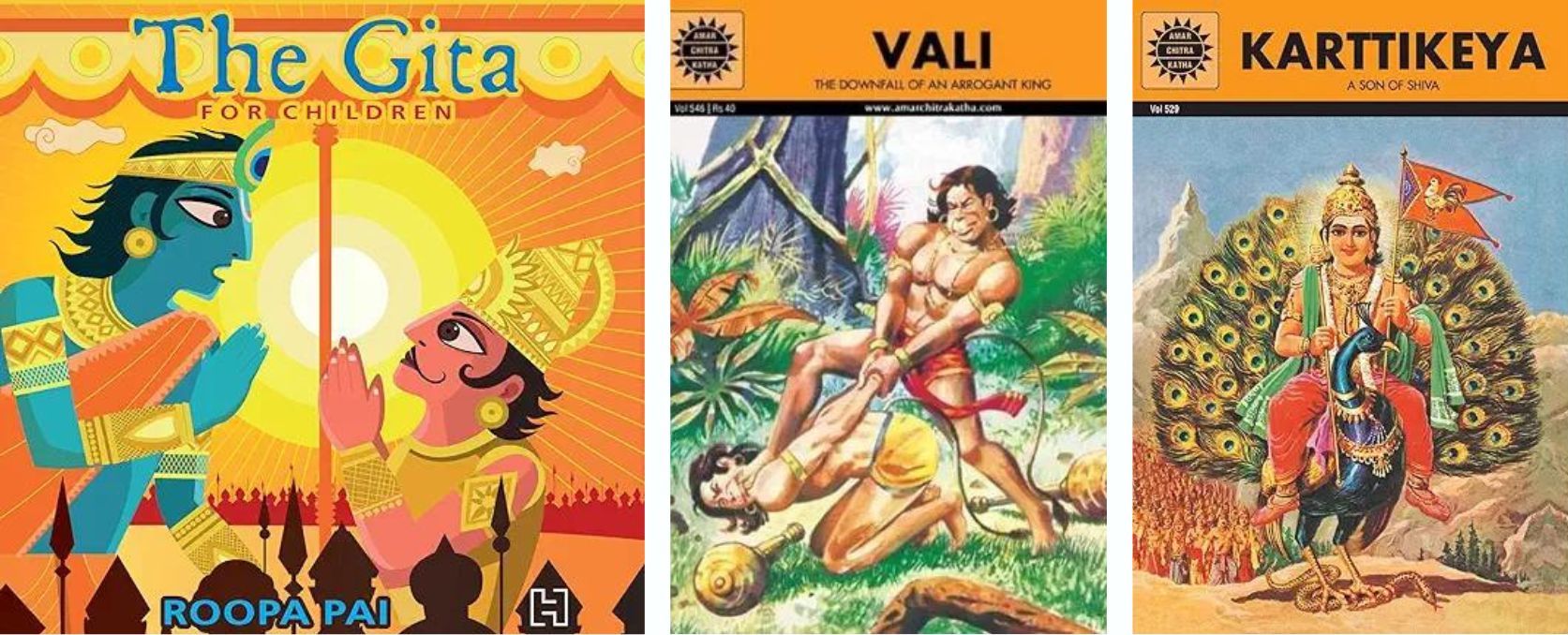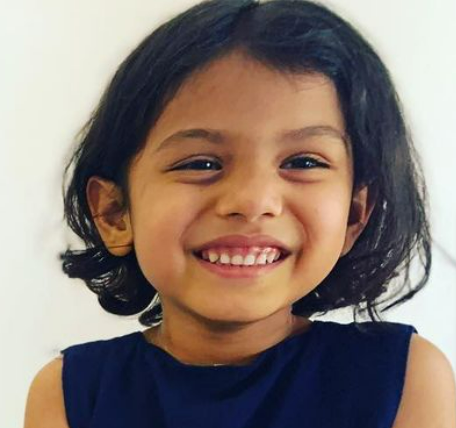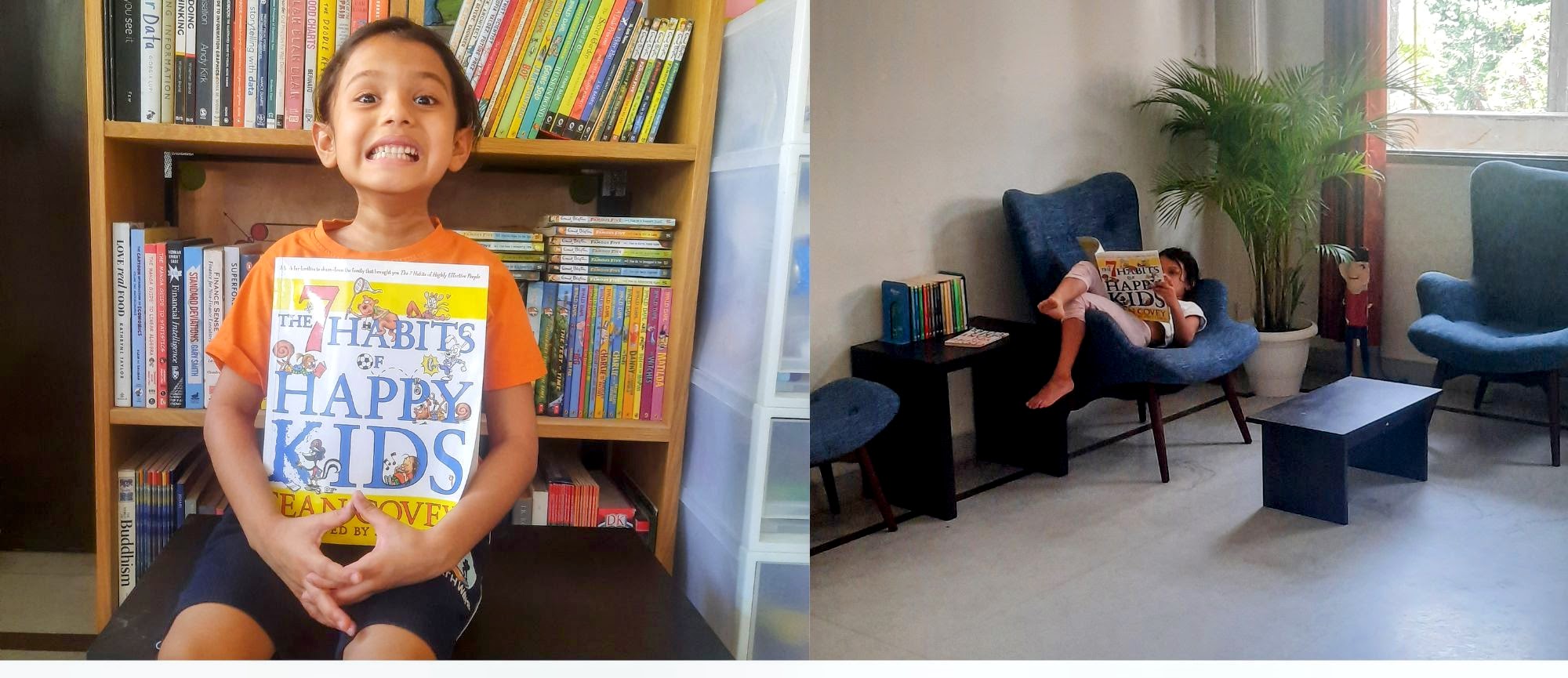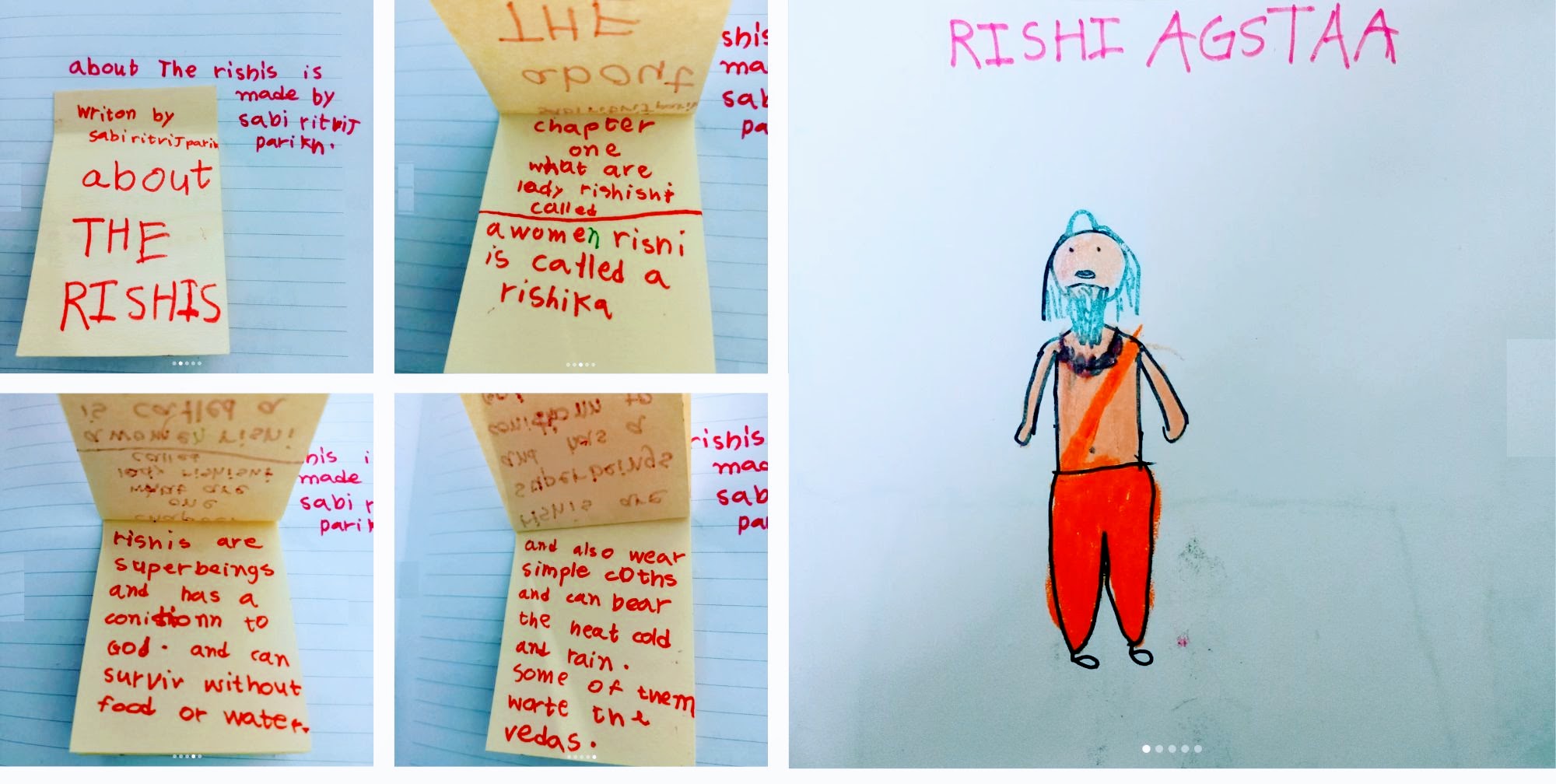
How to Introduce Non-Fiction to Children (Age 6-7)
Co-authored with Ritvvij Parrikh.
During our journey, Sabi was able to read advanced fiction books with ease, often becoming so engrossed that she would lose track of time.
As her vocabulary and comprehension expanded, we felt the natural next step was non-fiction. This shift promised not only a richer understanding of India and Indic religions but also the honing of skills like problem-solving, coupled with drawing inspiration from the lives of many.
Sustaining the Momentum
Our next mission was to ensuring a steady flow of engaging books without stretching our budget. Here’s how we did it:
Library: When our home library started to dwindle, we subscribed to Bukmuk, a library service that delivers books to your door. For a reasonable price of Rs. 2500 per quarter, we could choose 10 titles each week, and six of them would be delivered to us directly.
Newspaper: We chose Kids Age newspaper and magazine. Each month, a new issue arrived in our mailbox, packed with trivia, games, and non-fiction stories.
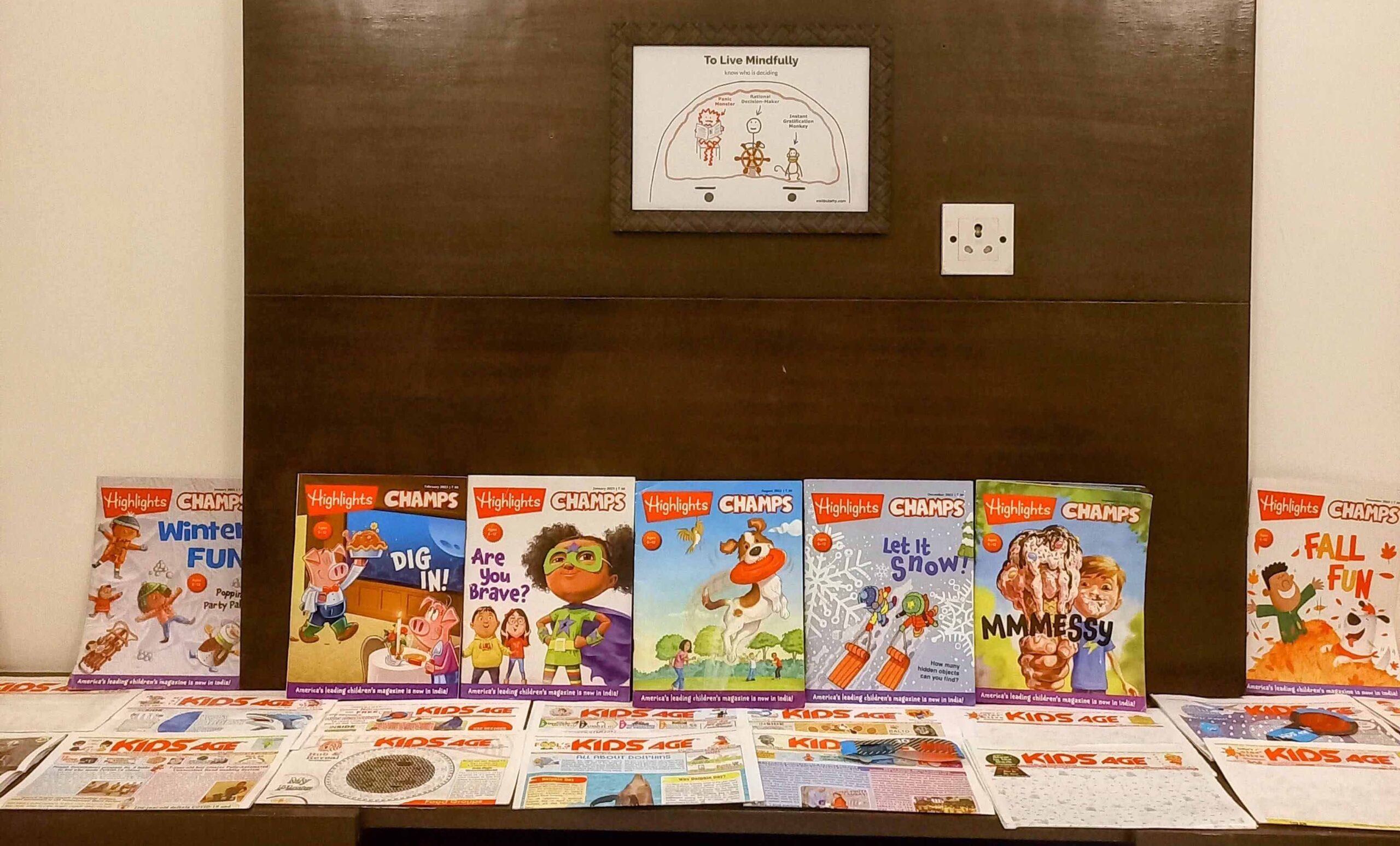
Bookstore Adventures: Regular trips to Kunzum bookstore became a highlight for Sabi, who would lose herself in the world of new books.
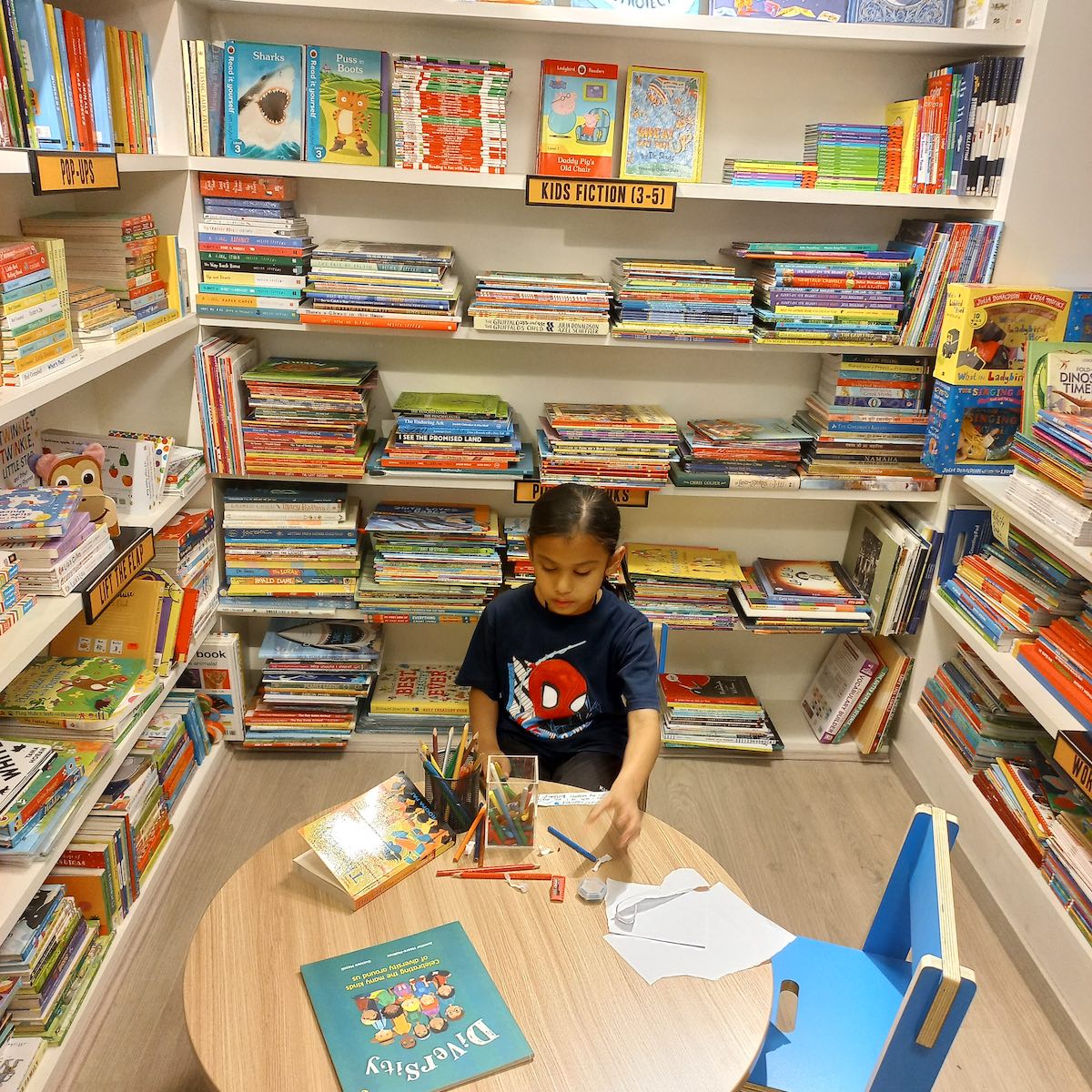
The School Library Challenge: At Sabi’s school, the library system typically matched books to age. However, Sabi’s reading skills were beyond her age. Recognizing this, she approached the school librarian and, after a brief reading test, was granted permission to borrow books from outside her age range.
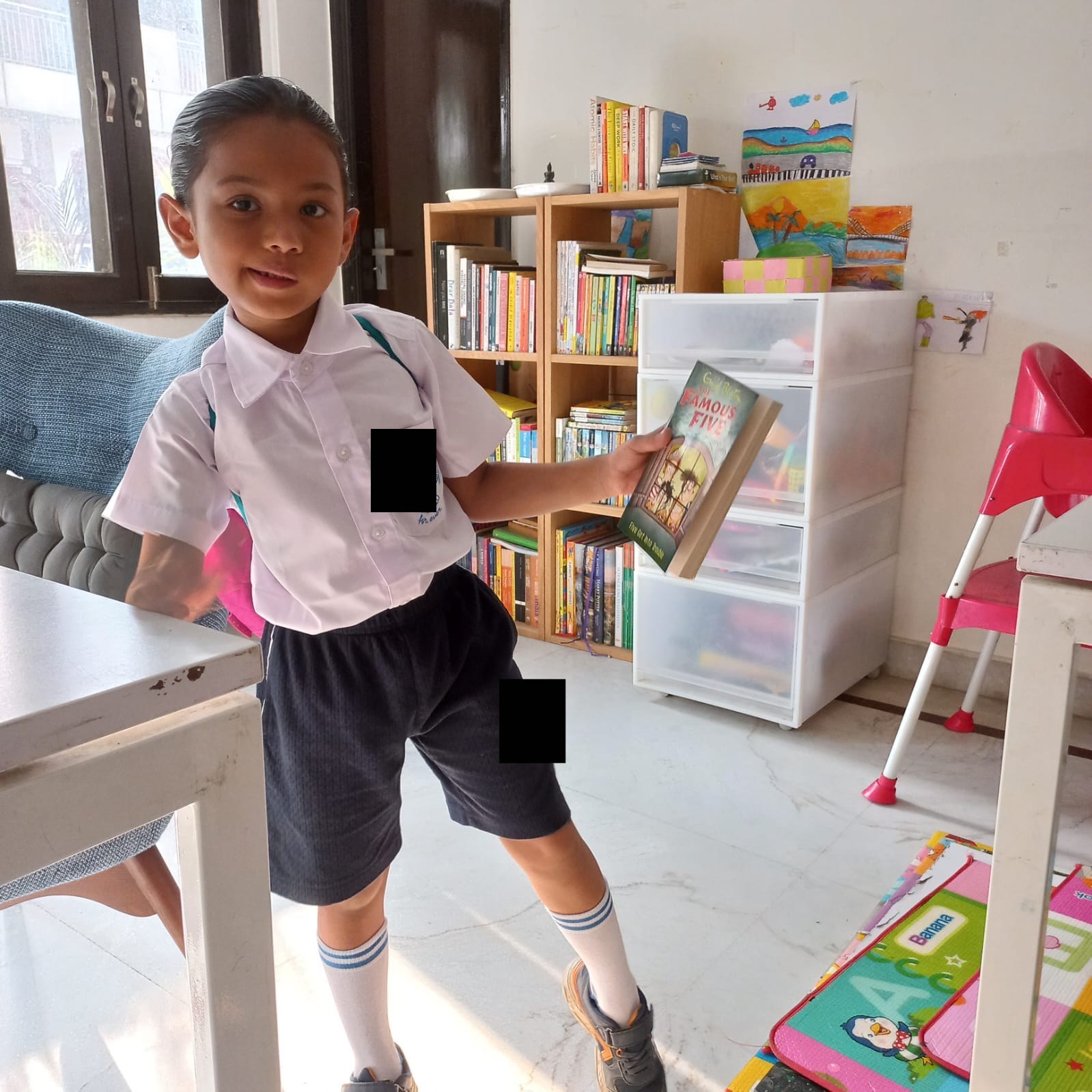
Diving into STEM
Role Models
- Good Night Stories for Rebel Girls 1 & 2: These books featured stories of women from a variety of fields, but Sabi was particularly drawn to stories of Indian women.
- Women in Science: This illustrated book introduced Sabi to 50 women in STEM, helping her learn about a variety of careers, from engineering and medicine to geology.
- Marie Curie: Sabi’s takeaway from this book was the importance of perseverance in scientific pursuits.
- Stephen Hawkings: A journey into the fascinating world of black hole theories.

“Fact Trackers” Series
Sabi discovered fascinating information on topics such as dolphins, sharks, ghosts, space, sea monsters, and dinosaurs.

Self Improvement
7 Habits of Happy Kids
Sabi delved into the “7 Habits of Happy Kids,” a kid-friendly adaptation of the iconic “The 7 Habits of Highly Effective People.” Four of the seven habits particularly resonated with her:
- Begin with the End in Mind (Have a Plan): She realized the importance of planning ahead. Instead of randomly cutting paper for crafts, she learned to visualize her desired outcome.
- Put First Things First (Work First, Then Play): She internalized the message that schoolwork should precede fun activities at the park.
- Sharpen the Saw (Balance Feels Best): Like Sophie in the book, Sabi loved immersing herself in stories. However, the book reminded her to prioritize other aspects of her life, such as spending time with friends, resting, and exercising.
- Think Win-Win (Everyone Can Win): Sabi envisioned cultivating micro-greens on the balcony. When she encountered resistance, she refused to give up. Instead, she crafted a letter outlining a win-win plan that would benefit everyone.
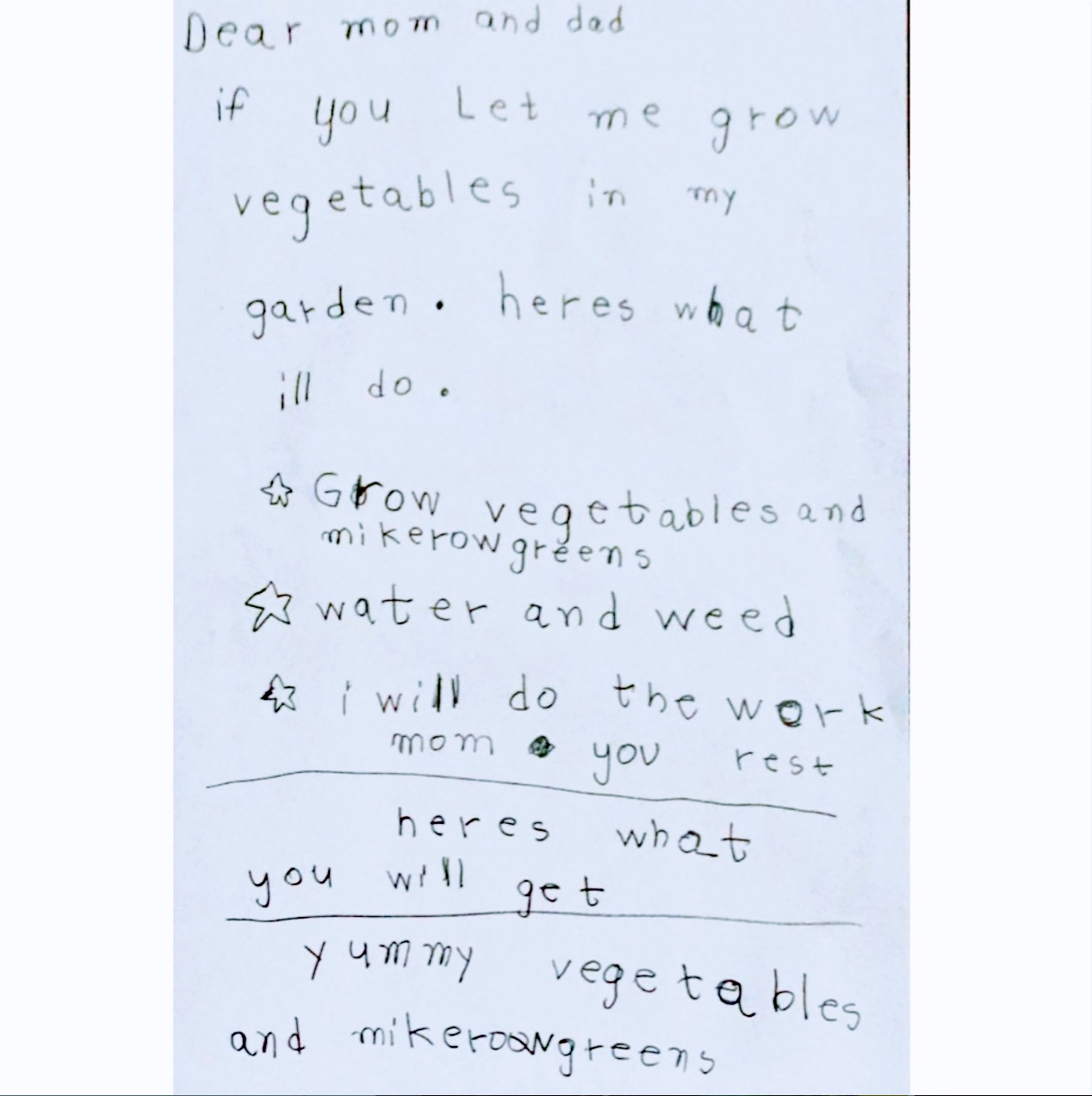
 Copied
CopiedZerodha’s Books for Kids
Once, we stumbled upon Zerodha, an Indian stock platform. Zerodha offered a varsity to educate people about investing, including five free kid-friendly e-books. We printed some and shared them with friends and family. Sabi gave them a read, but the ideas didn’t quite click.
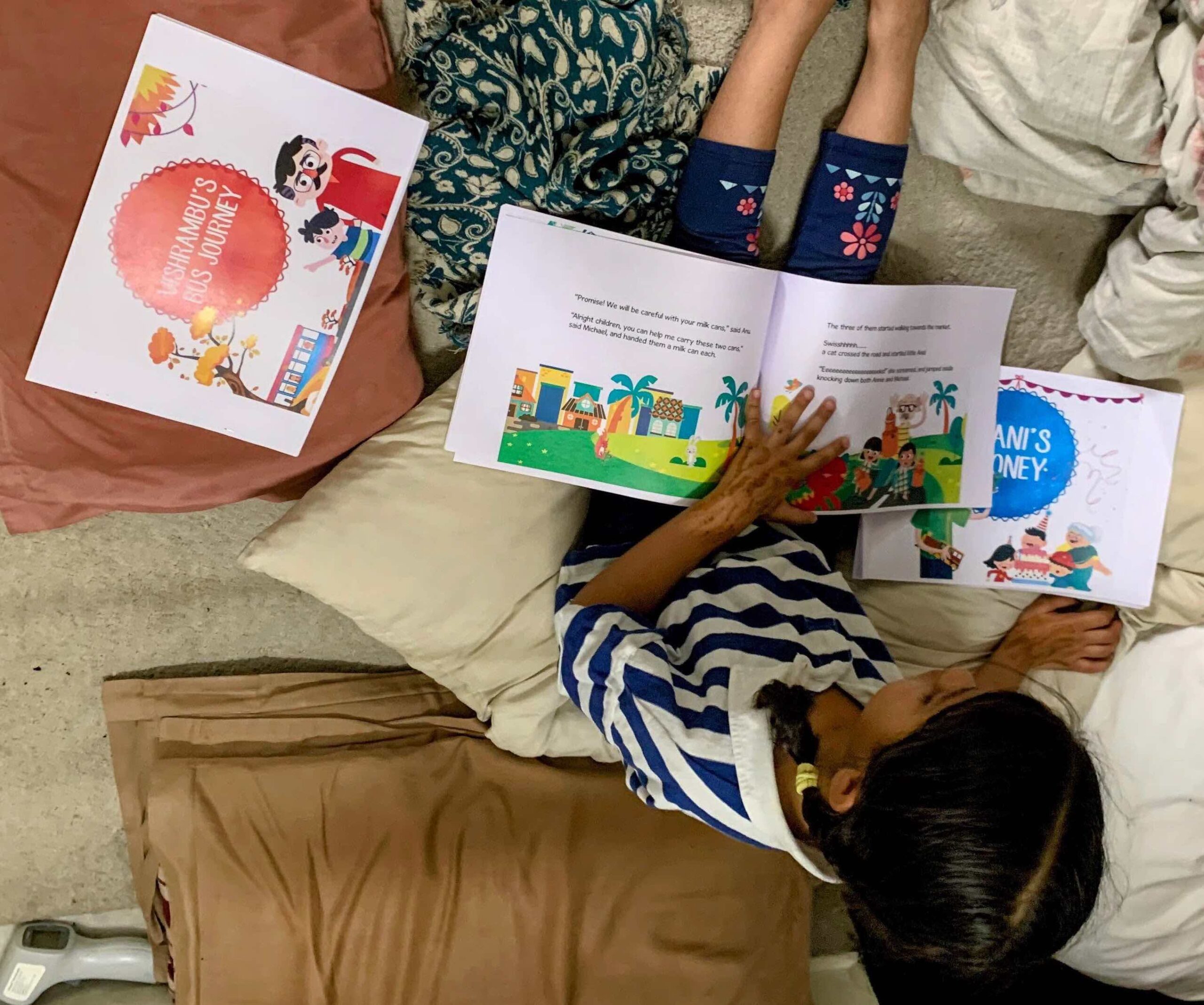
 Copied
CopiedRelatable Icons
Sabi enjoyed reading biographies of individuals she could relate to.
First, she explored “Who was Dr. Seuss?” Sabi was pleasantly surprised to learn about the man behind the beloved children’s books she had cherished as a child.
Next, she read “Who was Steve Jobs?” Sabi was familiar with Apple, as her cousin’s father worked there and she often used an iPad. However, the biography introduced her to the genius behind the company.
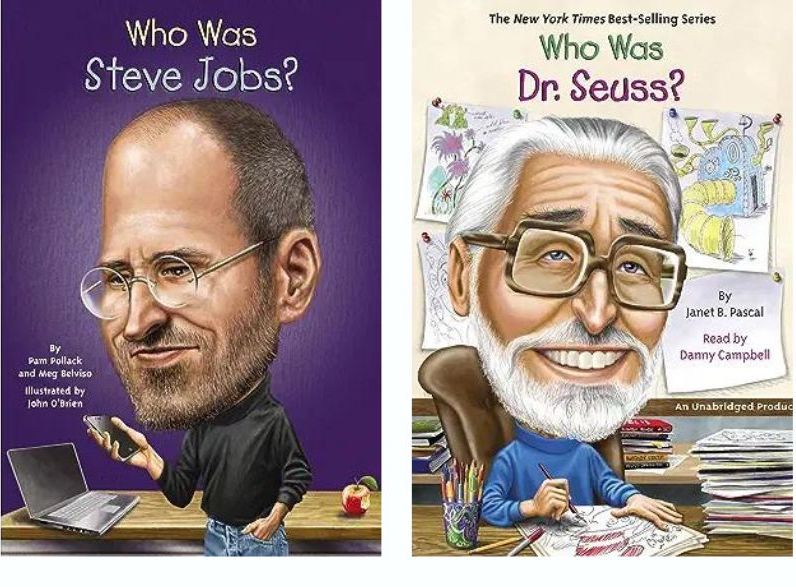
Here’s a thought she jotted down after reading:
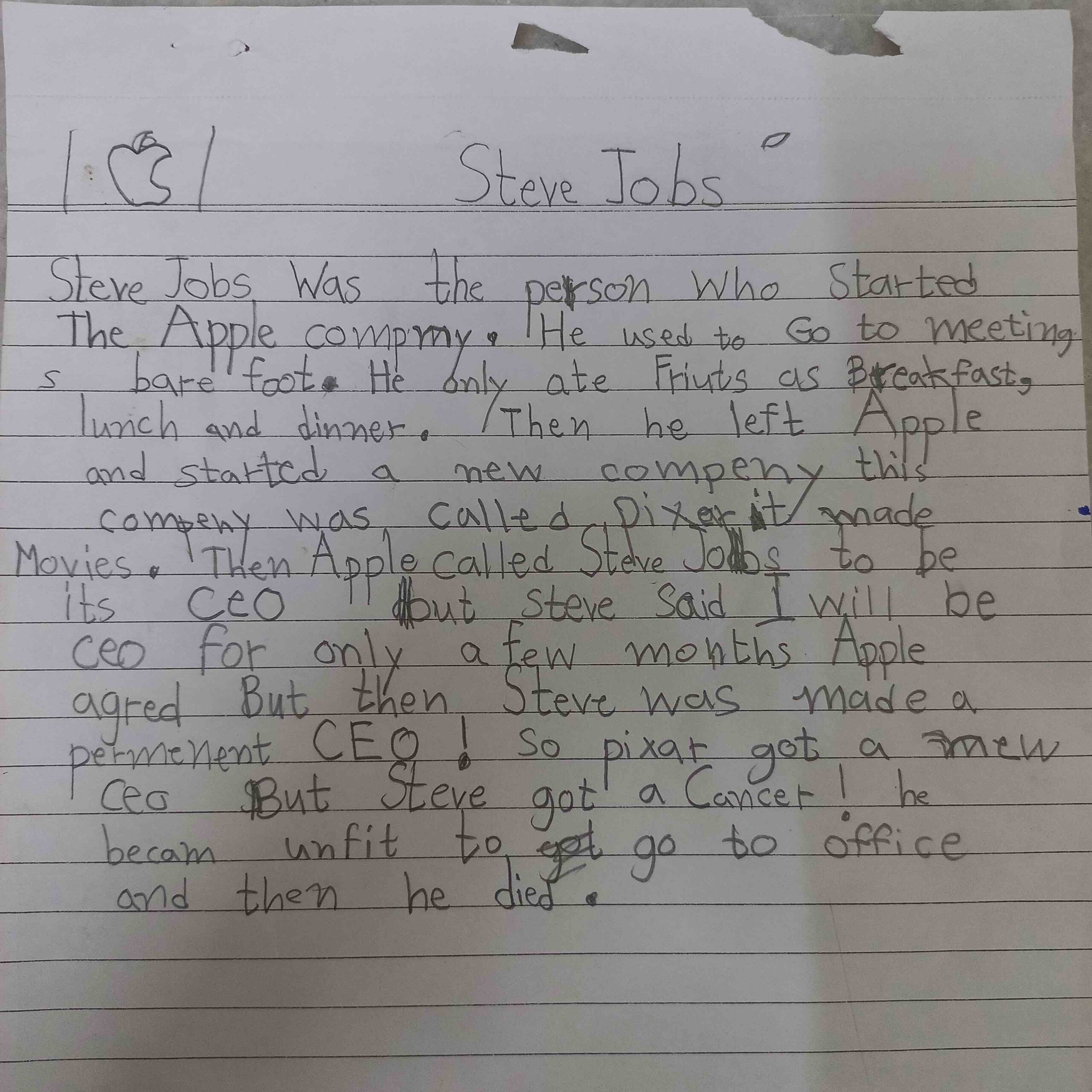
 Copied
CopiedInspiring Women
Sabi also read biographies of inspiring women.
- Helen Keller: The touching tale of a girl who relearnt communication after a debilitating illness.
- Amelia Earhart: Sabi admired the courage of a lone female pilot who soared over oceans
- Anne Frank: Sabi gained insights into the horrors of the Holocaust through Anne’s diary.
- Serena Williams: A testament to hard work and passion in the tennis arena.

The Human Face of Karate
Sabi wanted to learn about Kaicho Nakamura, the founder of Seido Karate. She borrowed “The Human Face of Karate” book from her Kyoshi. One of the things she read was that Kaicho Nakamura was shot (with a gun) by a rival Dojo. This reinforced the idea of Dojo Wars for her. 😅
However, the book was a bit too advanced for her at the time.
 Copied
CopiedIndia, that is Bharat
For Sabi, understanding and valuing her Indian heritage was vital. And to this end, we introduced her to:
Discover India Series
The Discover India Series dives into each state of India. It touches on food, clothes, art, dance, buildings, key spots, past events, culture, faith, and language.

 Copied
CopiedAmar Chitra Katha
We discovered Amar Chitra Katha books as a way to dive into India’s rich history. Through them, Sabi met legendary figures like Vivekananda, Mangal Pande, Chandra Shekhar Azad, Bhagat Singh, and Velu Thampi. These stories weren’t just tales; they were lessons from the past.

We took the plunge and got Sabi a 10-year subscription to Amar Chitra Katha’s app, unlocking over 5000 stories.
 Copied
CopiedBiographies
- Neerja Bhanot: The braveheart who saved many but faced a tragic end.
- Who Was Gandhi?: Beyond the folklore, Sabi learned about the man often titled the ‘Father of the Nation’.
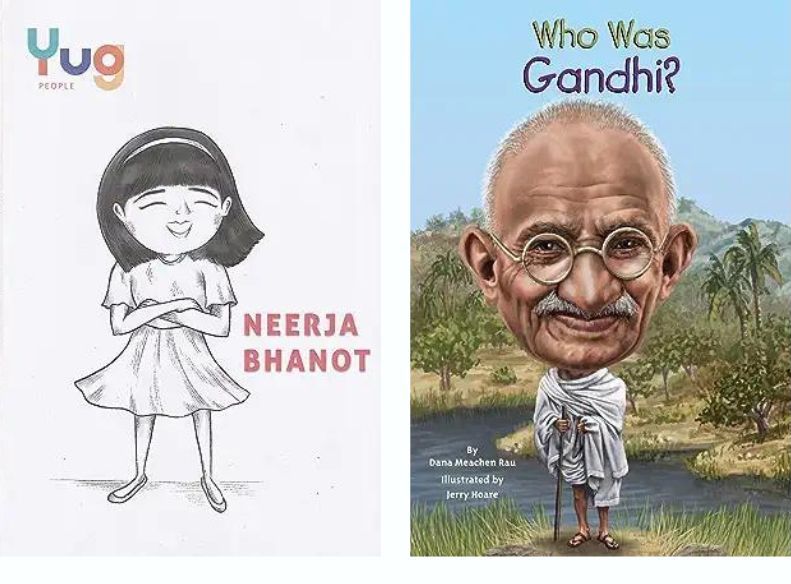
Embracing Indic Culture
With each festival, Sabi’s curiosity about its origins and meaning grew. To answer her questions without overwhelming her, we turned to carefully selected books that explained these narratives in relatable ways.
Amma Takes Me Places
Sabi stumbled upon a series that breaks down various festivals for kids: Diwali, Holi, Raksha Bandhan, Durga Puja, and Janmashtami. This series doesn’t just stop at the festivals. It dives into popular tales from Indian mythology. Ever wondered how Krishna took down Kansa? Or how Hanuman leapt all the way to Lanka? These books have the answers. Let’s dive into the list:
- Amma Take me to Shirdi
- Amma Takes Me Places
- Amma Tell Me About Hanuman!
- Amma Tell Me About Ramayana!
- Amma Tell Me About Raksha Bandhan!
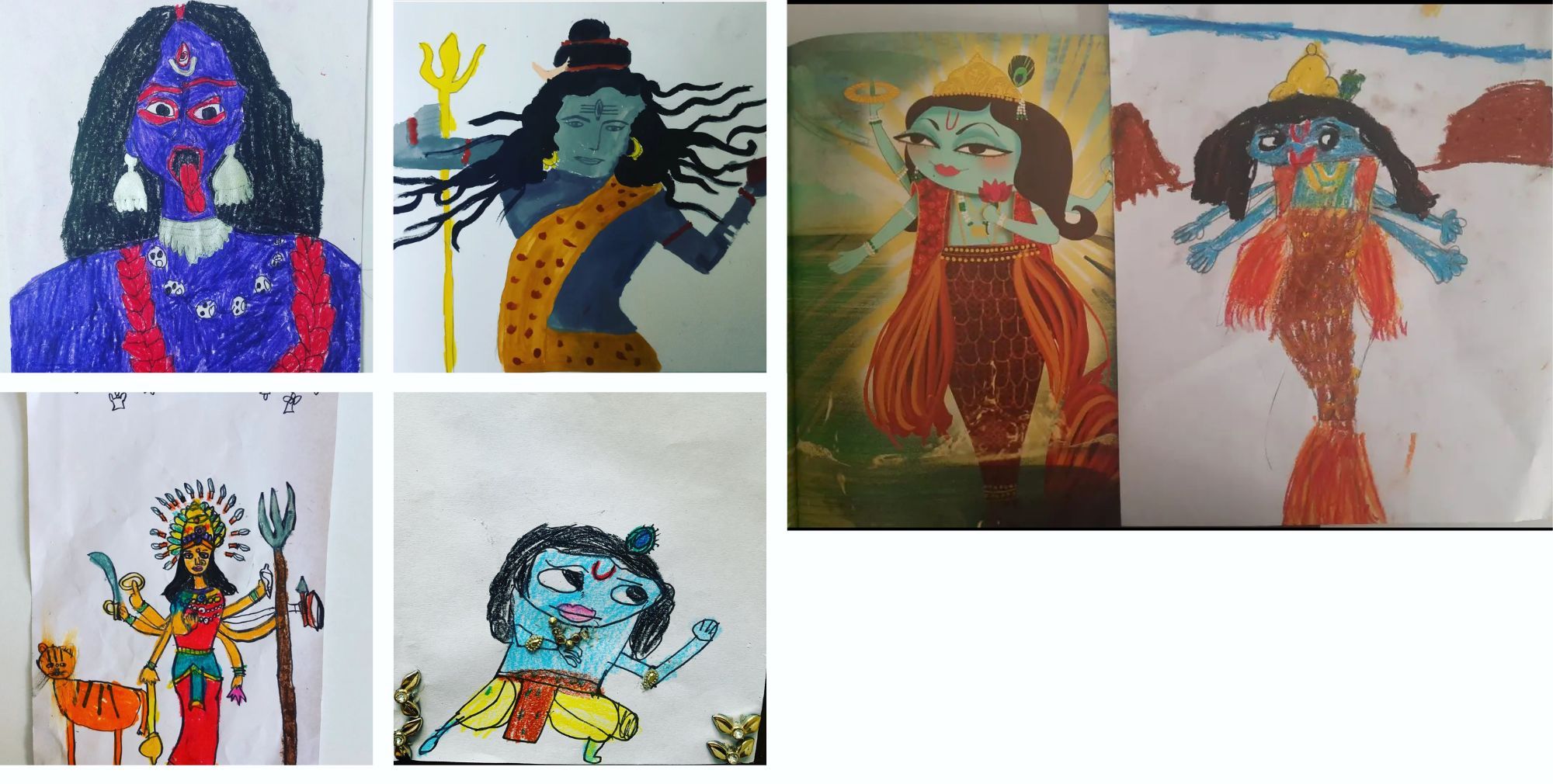
 Copied
Copied365 Stories from Vedas Upanishads and Puranas
In July 2022, Sabi got a unique gift from her aunt: a book named “365 Stories from Vedas Upanishads and Puranas.” Here’s what she learned:
- More than a Body: Sabi found out we have deeper roots, hinting at our connection to monkeys, and got a glimpse of the soul or Atman.
- Family Ties: Stories talked about sticking together as a family, valuing elders, and community’s strength. They showed Sabi how both fathers and mothers play different yet equally important roles.
- Learning from the Wise: Upanishads had tales of students learning from gurus. Sabi could relate to them because of her Kyoshi.
- Deep Ideas: Sabi came across thoughts like dharma, karma, and samsara.
- Brains over Brawn: Characters like Lord Krishna and Ganesha taught that using her head often beats using her fists.
With her growing curiosity and questions, a 15-day temple tour across Delhi, Rajasthan, Gujarat, and Madhya Pradesh was our next adventure.
 Copied
CopiedOther books
